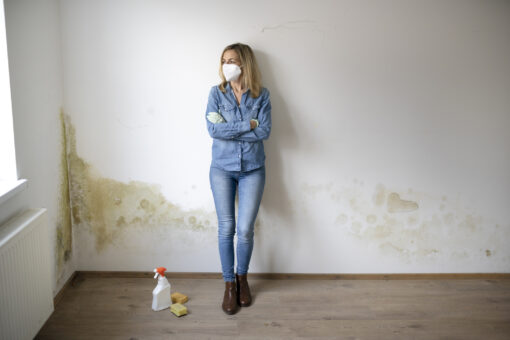
The risk of mold after water damage
Moist environments can engender all kinds of fungi, including mildew and mold. While different types of mold are necessary for the environment, they can cause problems because of their core ability to destroy organic materials.
Mildew –– which is mold in its early stages –– and mold can grow on all kinds of surfaces, including wood products, ceiling tiles, cardboard, wallpaper, drywall, fabric, plants, foods, insulation, and other organic materials.
Mold growths can start to grow on damp surfaces within 24 or 48 hours. They reproduce through tiny “seeds” can travel by air and reach different parts of your home. What makes mold particularly troubling is that they digest organic material, eventually destroying the material they grow on. In addition, mold can cause health problems among the general population, including respiratory problems, eye irritation, aches and pain, and many other problems.
Are you vulnerable to mold?
If your home has sustained water damage due to any of the following, you are at risk of dealing with a mold problem:
- Flooding
- Sewage back-up from flooding area
- Plumbing or roof leaks
- Damp basement or attic
- Overflows from sinks or bathtub
- High humidity from steam cooking, dryer vents, and other similar equipment
Fortunately, however, there are steps you can take to mitigate the likelihood of a mold infestation.
What you can do
You first want to turn off the main power if the wiring is wet or moldy. Then, you want to open up as many windows and doors as possible to circulate fresh air, as well as using fans and dehumidifiers to remove excess moisture. If mold has already started to grow, however, you don’t want to use fans because otherwise you will spread the existing mold.
You also want to remove all wet items such as furniture, clothes, rugs, and bedding. If walls and ceilings are wet, you will want to remove all porous materials, such as ceiling tiles, drywall, and so on in order to clean and disinfect them. You want to be using gloves and other safety equipment during this whole process.
For more comprehensive help, however, you want to speak with a plumber first. Here at Preferred Plumbing and Rooter Services, our team of trusted professionals is ready to help in your moment of need. If you live near Pomona, California, give us a call today: (877) 298-8105.
